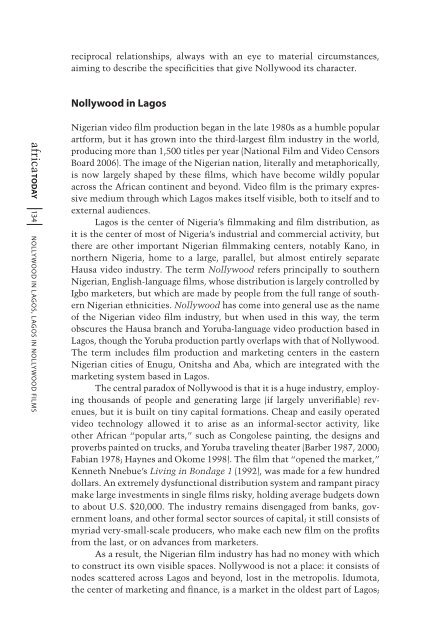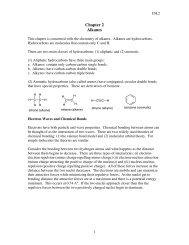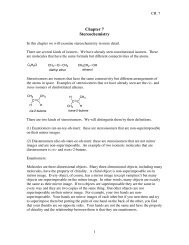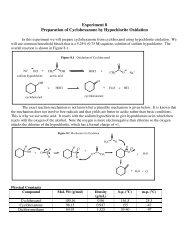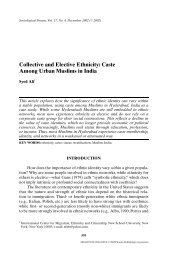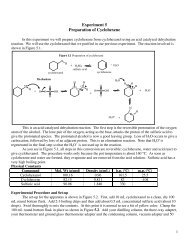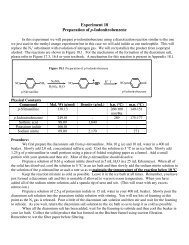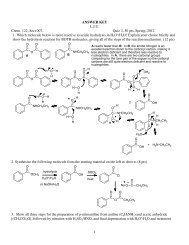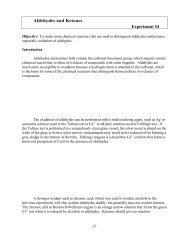Lagos is the ground of the films, not just in the sense that ... - myweb
Lagos is the ground of the films, not just in the sense that ... - myweb
Lagos is the ground of the films, not just in the sense that ... - myweb
You also want an ePaper? Increase the reach of your titles
YUMPU automatically turns print PDFs into web optimized ePapers that Google loves.
eciprocal relationships, always with an eye to material circumstances,aim<strong>in</strong>g to describe <strong>the</strong> specificities <strong>that</strong> give Nollywood its character.Nollywood <strong>in</strong> <strong>Lagos</strong>africa today 134 Nollywood <strong>in</strong> <strong>Lagos</strong>, <strong>Lagos</strong> <strong>in</strong> Nollywood FilmsNigerian video film production began <strong>in</strong> <strong>the</strong> late 1980s as a humble popularartform, but it has grown <strong>in</strong>to <strong>the</strong> third-largest film <strong>in</strong>dustry <strong>in</strong> <strong>the</strong> world,produc<strong>in</strong>g more than 1,500 titles per year (National Film and Video CensorsBoard 2006). The image <strong>of</strong> <strong>the</strong> Nigerian nation, literally and metaphorically,<strong>is</strong> now largely shaped by <strong>the</strong>se <strong>films</strong>, which have become wildly popularacross <strong>the</strong> African cont<strong>in</strong>ent and beyond. Video film <strong>is</strong> <strong>the</strong> primary expressivemedium through which <strong>Lagos</strong> makes itself v<strong>is</strong>ible, both to itself and toexternal audiences.<strong>Lagos</strong> <strong>is</strong> <strong>the</strong> center <strong>of</strong> Nigeria’s filmmak<strong>in</strong>g and film d<strong>is</strong>tribution, asit <strong>is</strong> <strong>the</strong> center <strong>of</strong> most <strong>of</strong> Nigeria’s <strong>in</strong>dustrial and commercial activity, but<strong>the</strong>re are o<strong>the</strong>r important Nigerian filmmak<strong>in</strong>g centers, <strong>not</strong>ably Kano, <strong>in</strong>nor<strong>the</strong>rn Nigeria, home to a large, parallel, but almost entirely separateHausa video <strong>in</strong>dustry. The term Nollywood refers pr<strong>in</strong>cipally to sou<strong>the</strong>rnNigerian, Engl<strong>is</strong>h-language <strong>films</strong>, whose d<strong>is</strong>tribution <strong>is</strong> largely controlled byIgbo marketers, but which are made by people from <strong>the</strong> full range <strong>of</strong> sou<strong>the</strong>rnNigerian ethnicities. Nollywood has come <strong>in</strong>to general use as <strong>the</strong> name<strong>of</strong> <strong>the</strong> Nigerian video film <strong>in</strong>dustry, but when used <strong>in</strong> th<strong>is</strong> way, <strong>the</strong> termobscures <strong>the</strong> Hausa branch and Yoruba-language video production based <strong>in</strong><strong>Lagos</strong>, though <strong>the</strong> Yoruba production partly overlaps with <strong>that</strong> <strong>of</strong> Nollywood.The term <strong>in</strong>cludes film production and market<strong>in</strong>g centers <strong>in</strong> <strong>the</strong> easternNigerian cities <strong>of</strong> Enugu, Onitsha and Aba, which are <strong>in</strong>tegrated with <strong>the</strong>market<strong>in</strong>g system based <strong>in</strong> <strong>Lagos</strong>.The central paradox <strong>of</strong> Nollywood <strong>is</strong> <strong>that</strong> it <strong>is</strong> a huge <strong>in</strong>dustry, employ<strong>in</strong>gthousands <strong>of</strong> people and generat<strong>in</strong>g large (if largely unverifiable) revenues,but it <strong>is</strong> built on t<strong>in</strong>y capital formations. Cheap and easily operatedvideo technology allowed it to ar<strong>is</strong>e as an <strong>in</strong>formal-sector activity, likeo<strong>the</strong>r African “popular arts,” such as Congolese pa<strong>in</strong>t<strong>in</strong>g, <strong>the</strong> designs andproverbs pa<strong>in</strong>ted on trucks, and Yoruba travel<strong>in</strong>g <strong>the</strong>ater (Barber 1987, 2000;Fabian 1978; Haynes and Okome 1998). The film <strong>that</strong> “opened <strong>the</strong> market,”Kenneth Nnebue’s Liv<strong>in</strong>g <strong>in</strong> Bondage 1 (1992), was made for a few hundreddollars. An extremely dysfunctional d<strong>is</strong>tribution system and rampant piracymake large <strong>in</strong>vestments <strong>in</strong> s<strong>in</strong>gle <strong>films</strong> r<strong>is</strong>ky, hold<strong>in</strong>g average budgets downto about U.S. $20,000. The <strong>in</strong>dustry rema<strong>in</strong>s d<strong>is</strong>engaged from banks, governmentloans, and o<strong>the</strong>r formal sector sources <strong>of</strong> capital; it still cons<strong>is</strong>ts <strong>of</strong>myriad very-small-scale producers, who make each new film on <strong>the</strong> pr<strong>of</strong>itsfrom <strong>the</strong> last, or on advances from marketers.As a result, <strong>the</strong> Nigerian film <strong>in</strong>dustry has had no money with whichto construct its own v<strong>is</strong>ible spaces. Nollywood <strong>is</strong> <strong>not</strong> a place: it cons<strong>is</strong>ts <strong>of</strong>nodes scattered across <strong>Lagos</strong> and beyond, lost <strong>in</strong> <strong>the</strong> metropol<strong>is</strong>. Idumota,<strong>the</strong> center <strong>of</strong> market<strong>in</strong>g and f<strong>in</strong>ance, <strong>is</strong> a market <strong>in</strong> <strong>the</strong> oldest part <strong>of</strong> <strong>Lagos</strong>;


